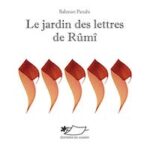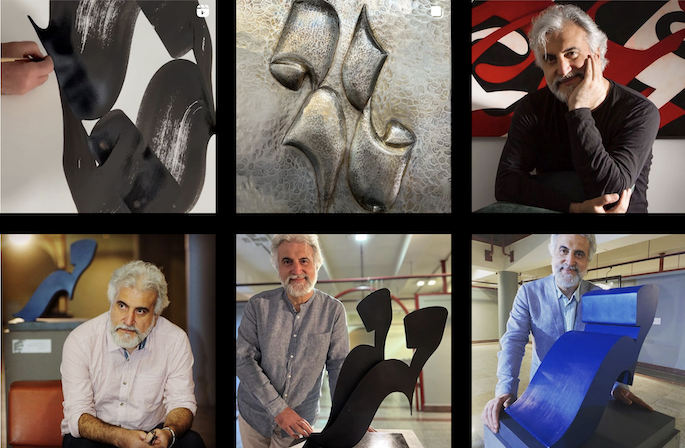BETWEEN EAST AND WEST
CalligraVie
For the first time, in France, an exhibition called » CalligraVie » , will present works by calligrapher students from France and abroad from the » CalligraVie » school , as well as modern artistic creations by Iranian students from the school. » Musicalligraphy « , two concepts designed and developed by master calligrapher and Franco-Iranian artist Bahman Panahi.
The « CALLIGRAVIE » symbolizes calligraphy as a living and creative art through the different fields of possibilities it offers in the rhythmic composition of words, while respecting the traditional practice. She is represented by her students in France and abroad, initiated into traditional/classical calligraphy.
In continuity, the « MUSICALLIGRAPHY » reflects the desire to highlight the intimate link between music and calligraphy. It testifies to the natural progress of classical calligraphy towards abstract and conceptual forms of contemporary art: the rules are transcended in favor of the plastic approach which adds rhythm to the work. This concept is represented by the contemporary works of Iranian students.
These two concepts, brought together for our exhibition, will give rise to a lively and contemporary artistic demonstration at the crossroads of Eastern and Western cultures.
In addition to the artistic exhibition, a graduation ceremony is also planned for calligrapher students in order to perpetuate the transmission of this art from masters to students.
This event will be an opportunity to bring together all art and culture enthusiasts around a moment of sharing with, in addition to the exhibition, the realization of artistic performances and debates around art.

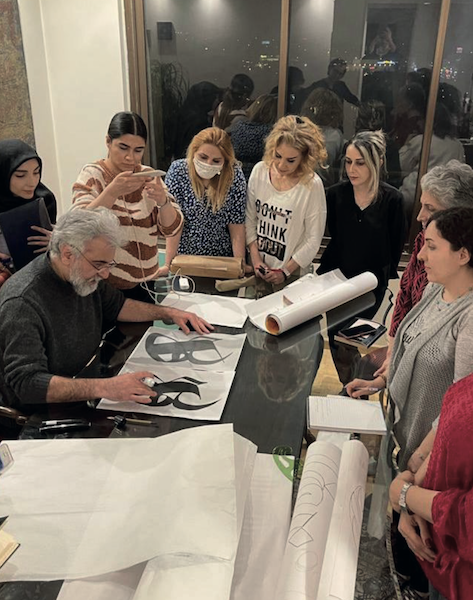
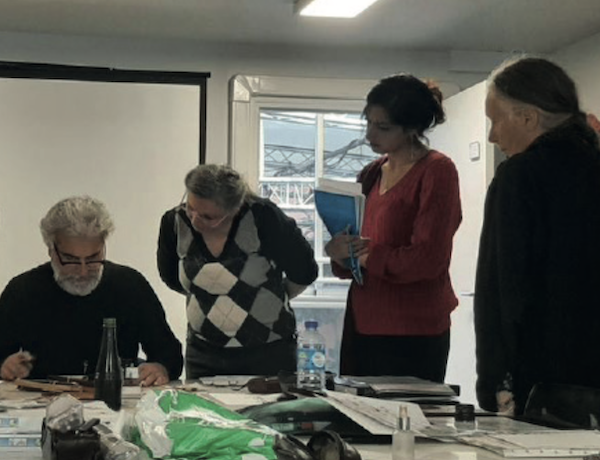

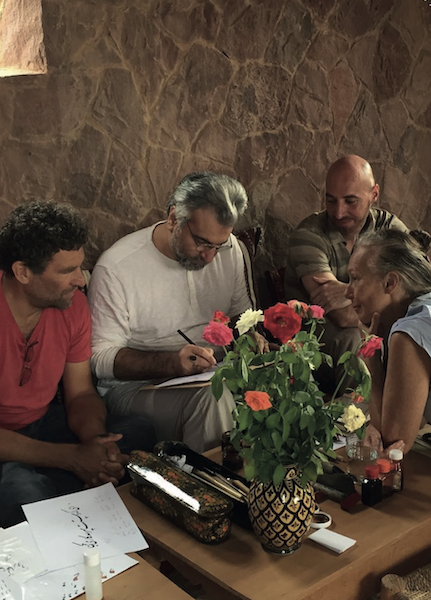
A concept
CalligraVie is not just a word game, uniting the words calligraphy and life. It is above all a concept, an idea that was born from the practice and teaching of an art, that of calligraphy. Rich in its tradition, calligraphy is an art that combines rigor and freedom: rigor, because its practice results from a long and rigorous learning of a style and its rules, freedom, because it is the expression of the sensitive in a quest for aesthetics where poetry and spirituality come together.
In essence, calligraphy is the art of writing well, but does not depart from its meaning: each line, each line thickness, each letter stretch, each dot contributes to the balance of the work, poetizes and magnifies the message they convey. Like a musical score, harmony is also at stake: scrolls and rounded shapes balance each other, while respecting a rhythm. This rhythm is the one instilled by the calligrapher. The latter uses his energy by adopting a posture. He fixes his concentration through his breathing, where his inspirations and expirations mark the tempo. Equipped with his pen, rare quality paper and ink, he works. Like a musician doing his scales, he rehearses while aspiring to reach the perfection of the layout of letters, words… He becomes a composer,
Having in memory and as a model the master who initiated him, he is the bearer of a tradition, that of an ancestral art, the practice of which is anchored in the respect of fundamental principles.
Calligraphy relies on slowness to allow the calligrapher to develop his concentration and patience skills. Thus, carrier of serenity and tranquility, it promotes stability and inner balance. And, as it requires regularity, it is in fact structuring. All these virtues contribute to the elevation of the individual. This is how it fits into our contemporary life, because the qualities that its practice promotes are essential and necessary in everyone’s daily life. Moreover, it encourages sharing and openness to others. She also finds her way in the new dimensions that contemporary art allows. The horizon of his means of expression has widened, as illustrated by the visual arts and the interaction between calligraphy and music.
Calligraphy is therefore a way of life where art, spirituality and philosophy are inseparable and interact in the same temporality. And as calligraphy is a living art which finds its place in our current world and which it influences, even shapes the personality of those who practice it, CalligraVie has imposed itself as the title for this exhibition.
PRESENTATION OF WORKS
The project is the result of the work of the students and their learning, provided by their teacher, Bahman Panahi.
A certificate presentation, called « Govâhinâméh » (همانیهاوگ) in Persian, Ijazah (ةزاجإ,) in Arabic is planned by the teacher to the students in accordance with tradition.
Originally, this graduation was a permission granted by the Master to his student so that the latter could teach and sign his work. The tradition has evolved. In our time, this delivery of certificates is organized to validate the level of mastery of calligraphy, reached by the student. The objective is to allow each student to become aware of his level, evaluated according to a gradation which starts from the status of beginner to that of master.
Thus, during the exhibition, several events will be planned:
▪an exhibition of works of traditional calligraphy executed by a cosmopolitan panel of students from Bahman Panahi.
It will be enriched by the presentation of emblematic works by Gholâmhossein Amikhâni and Bahman Panahi
▪an exhibition of works of contemporary and conceptual calligraphy, created by Iranian calligraphers, members of the Musicalligraphy group, directed by Bahman Panahi
▪a speech to open the exhibition by Bahman Panahi, during the opening
▪a ceremony to hand over certificates )ةزاجإ( or “Govâhinâméh” ( )-Ijazat
▪artistic calligraphy performances by Gholâmhossein Amikhâni, Bahman Panahi and students
▪a screening of a documentary with the testimonies of Gholâmhossein Amikhâni, Bahman Panahi and the students.
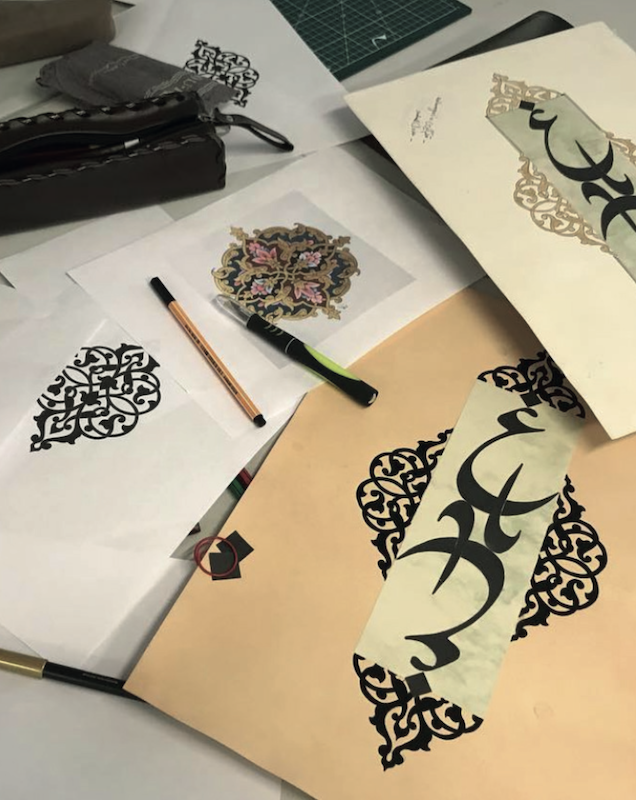
Exercice de composition sur le mot « jardin » et travail sur l’enluminure
BAHMAN PANAHI
Visual artist, calligrapher and musician born in Iran, mixing visual abstraction, calligraphy and music giving birth to MUSICALLIGRAPHY

